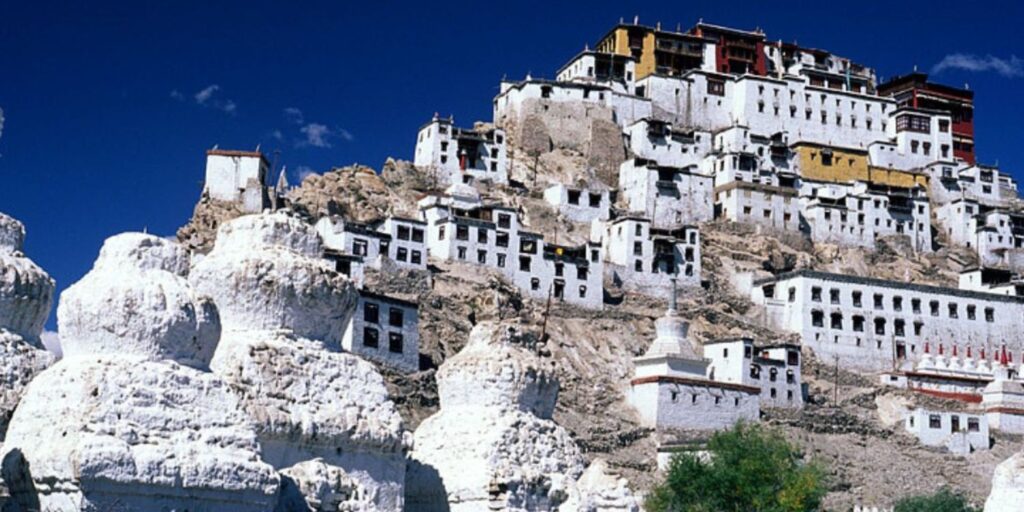Welcome to Shey Palace, an enchanting gem nestled just a stone’s throw away from Leh in the heart of Ladakh, India.
Further, steeped in history, spirituality, and cultural significance, Shey Palace is a testament to the region’s heritage and architectural prowess.
This historic site, comprising a monastery and a palace, offers tourists a captivating journey through time. Additionally, at the heart of Shey Palace lies the magnificent three-story statue of Buddha Shakyamuni, sculpted from copper and renowned as a unique marvel in the region.
However, this awe-inspiring masterpiece is just one of the many treasures waiting to be discovered within the palace complex. Adorned with Buddhist chortens and surrounded by serene landscapes, this exudes an aura of tranquility and spiritual splendor.
Initially serving as the summer capital of Ladakh, Shey Palace was commissioned by Deldan Namgyal to honor his late father, Sengge Namgyal. Today, it continues to captivate visitors with its rich history, vibrant festivals, and cultural significance.
Join us on a journey of exploration as we delve into the captivating world of Shey Palace, where every corner tells a story and every moment is filled with wonder.
1. History of Shey Monastery

The Shey Monastery is a testament to the region’s rich cultural heritage and spiritual legacy. The history of Shey Monastery traces back to the 10th century when Lhachen Palgyigon, the illustrious king of Ladakh, erected the original palace near Shey village.
Additionally, Deldan Namgyal meticulously constructed the current magnificent structure in 1655 through Shey Palace timings.
Furthermore, he dedicated this architectural marvel to his revered father, Sengge Namgyal, embodying profound familial reverence and religious devotion.
Today, Shey Monastery is a site of historical significance and a beacon of spiritual enlightenment, drawing pilgrims and enthusiasts alike to its hallowed grounds.
2. Architecture of Shey Monastery
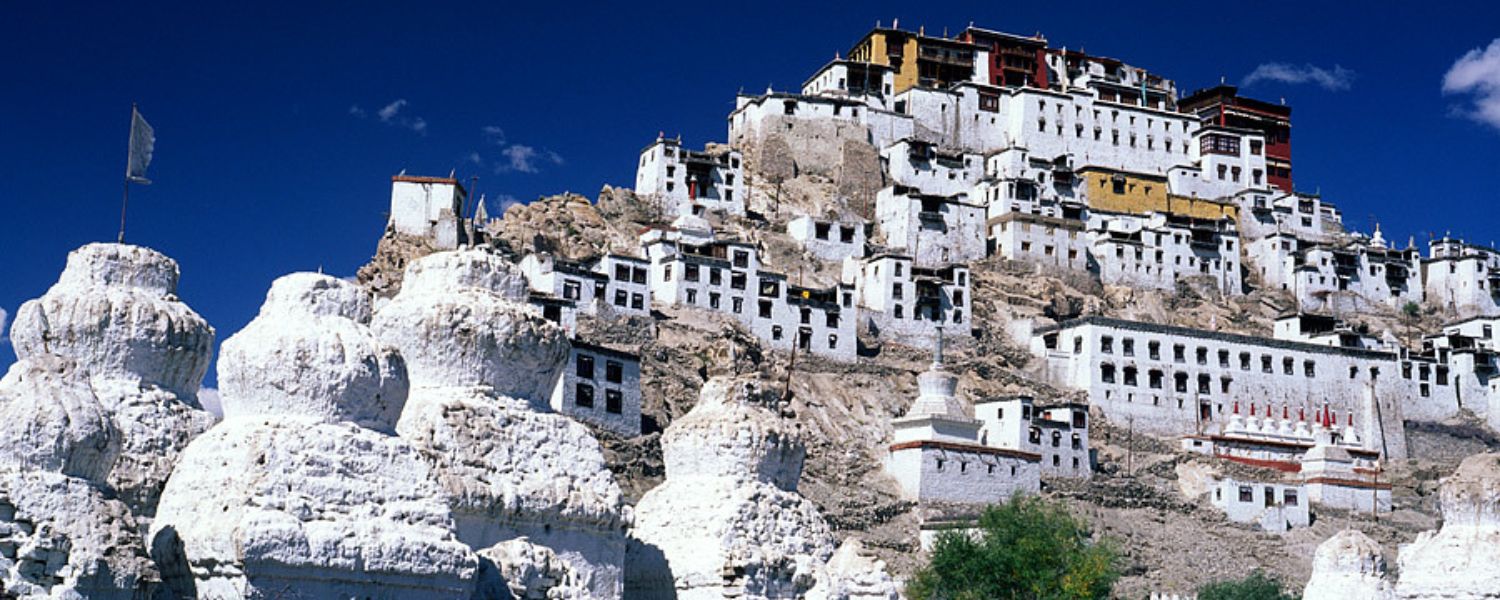
The architectural marvel of Shey Monastery, nestled in the serene landscapes of Shey Palace Ladakh, exemplifies the exquisite Tibetan style.
The focal point of this spiritual haven is the awe-inspiring 12-meter-tall Shakyamuni Buddha statue adorning three floors of the gompa.
Furthermore, the upper floor, visitors are greeted by a mesmerizing array of wall paintings depicting tales of wisdom and spirituality.
Descending to the lower level, one discovers a treasure trove of knowledge within the Shey palace and monastery library, housing ancient manuscripts and vibrant murals portraying Buddha’s divine gestures.
A short stroll from the monastery unveils yet another gem: a small shrine erected by Sengge Namgyal, boasting another grand statue of Shakyamuni Buddha.
Further, the Shey Monastery, also known as Shey Palace, offers tourists a glimpse into the region’s rich cultural heritage.
From the imposing Giant Copper statue to the captivating wall paintings, and from the immer and further, you can also visit historical monuments of Jammu and Kashmir.
3. Best Time to Visit Shey Monastery
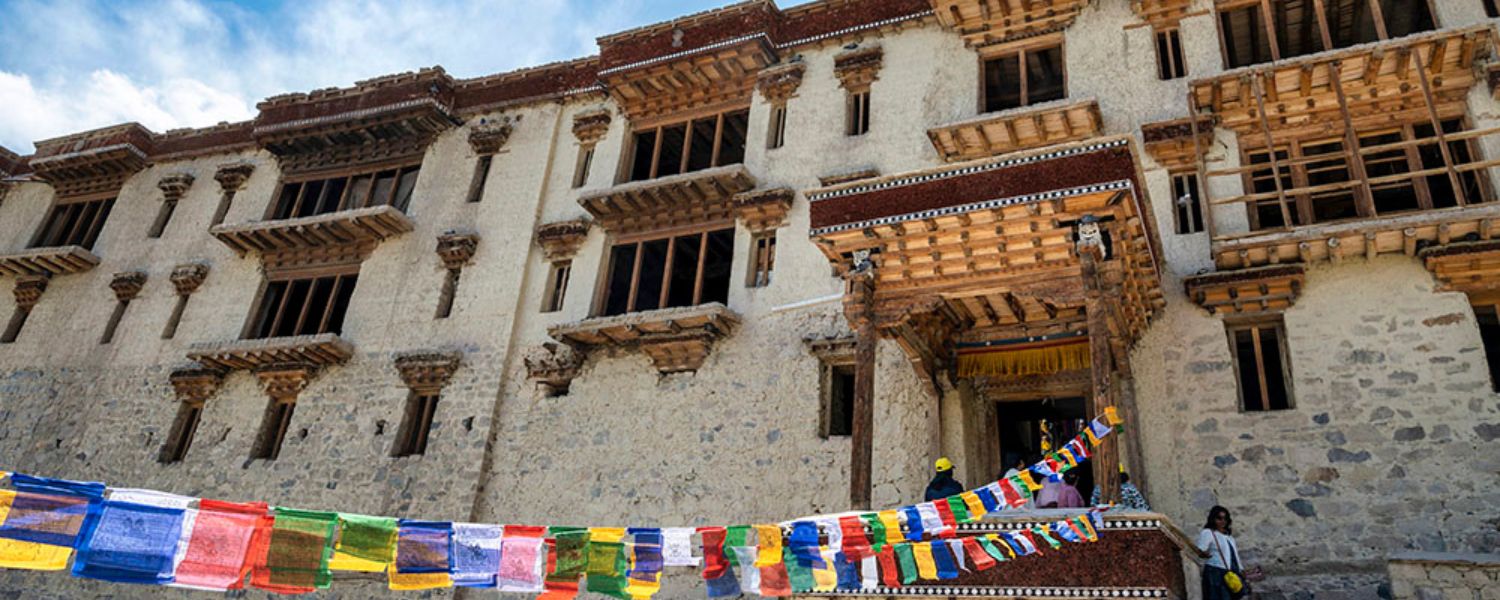
However, the optimal time to explore Shey Monastery coincides with the vibrant celebrations of Shey Loo Doo and Shey Rupla festivals.
Additionally, Shey Palace boasts ideal weather conditions from July to September, offering visitors a delightful experience.
Returning to Shey Palace’s enchanting ambiance, visitors can revel in its rich Shey palace history and architectural splendor.
This ancient marvel is a testament to Ladakh’s cultural Heritage sites of Jammu and Kashmir, inviting visitors to themselves in its timeless allure.
Whether amidst festive fervor or serene summer days, Shey Palace promises an unforgettable journey through Ladakh’s illustrious past.
4. How to Reach Shey Monastery?
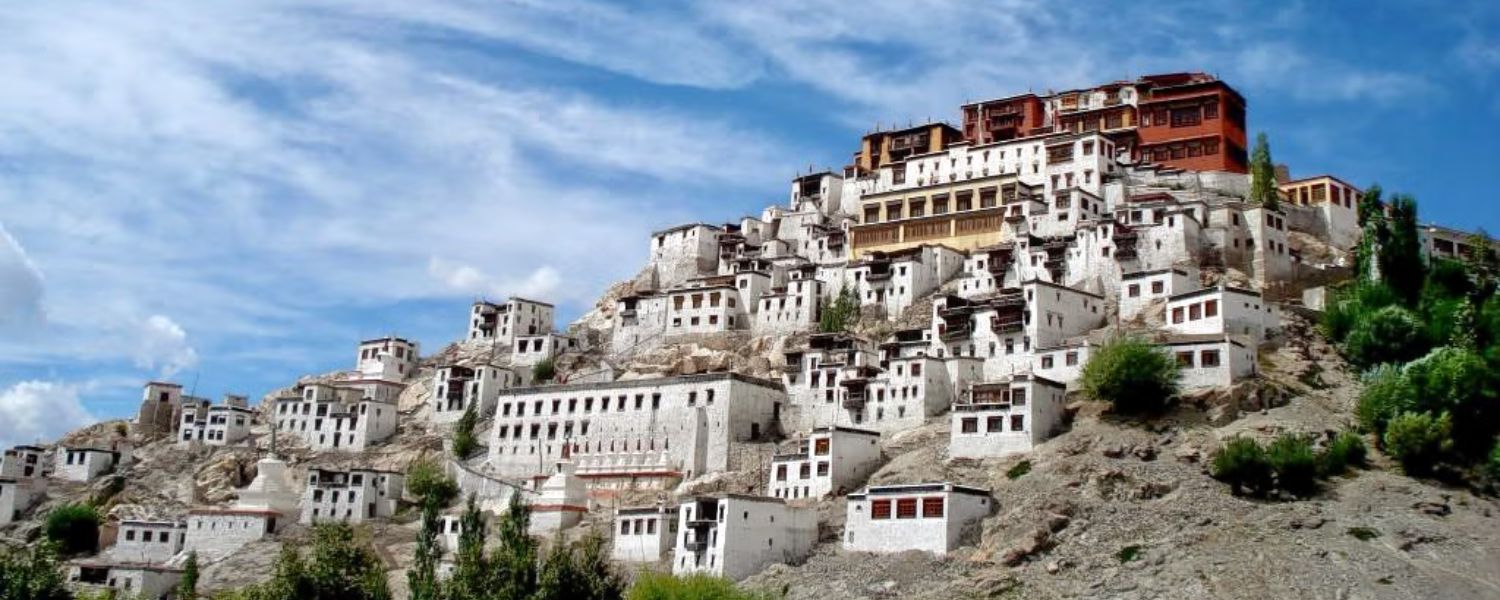
To embark on a serene journey to Shey Monastery, the gateway to spiritual enlightenment, accessing Shey Palace marks the pivotal starting point.
Moreover, positioned along the Delhi-Manali Road, approximately 16 kilometers from the heart of Shey Palace Leh City, Shey Palace stands as a beacon guiding travelers to this sacred site.
Additionally, seamlessly from urban landscapes to the tranquil expanse of Ladakh’s countryside, Is Shey Palace worth visiting.
You can opt for the convenience of a hired cab or the freedom of a rented bike to navigate the picturesque route. Whether, the scenic beauty en route to your spiritual odyssey at Shey Monastery, starting from the majestic grounds of Shey Palace.
5. Festivals

The majestic beauty of the Himalayas, Shey Palace stands as a timeless emblem of cultural and spiritual resonance in the heart of the Tibetan region.
Embracing the cyclical rhythms of nature, Shey Palace hosts two enchanting seasonal festivals annually, each imbued with profound significance and vibrant traditions.
Additionally, from the tranquil embrace of winter into the genuine promise of spring, the “Shey Doo Lhoo” festival heralds the dawn of the sowing season.
Further, held on the 26th and 27th days of the first month in the Tibetan calendar, typically corresponding to July or August in the Gregorian calendar, this joyous occasion draws villagers and monks alike to the sacred grounds of the monastery amidst the rhythmic chants and intricate rituals performed by the resident monks, the air brims with anticipation and reverence.
As the wheel of time turns and the golden hues of autumn blanket the land, the “Shey Rupla” festival blossoms, celebrating the bountiful harvest.
However, against the backdrop of serene mountains, farmers gather to offer the first fruits of their labor, a gesture of gratitude to the divine.
Further, the festivities, the “Rhupla dance” unfolds, a mesmerizing spectacle where men adorned in tiger costumes weave tales of folklore and tradition.
6. Funerals
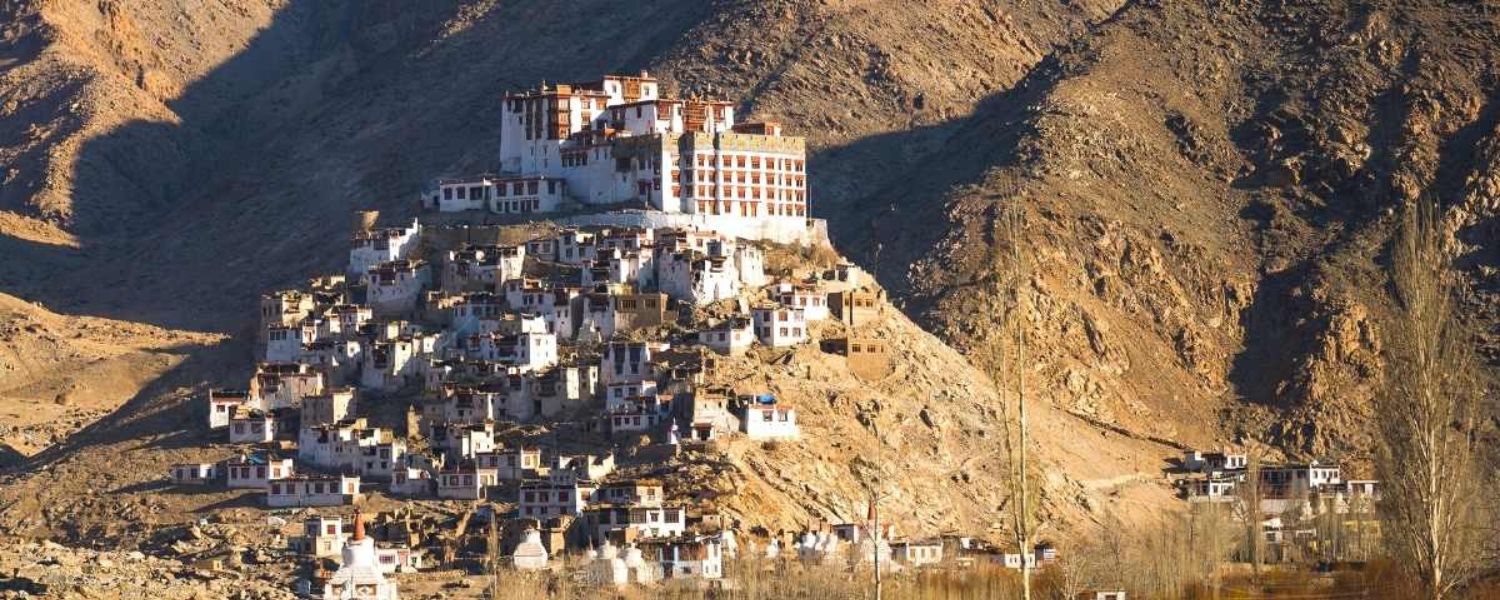
Nestled close to the illustrious Shey Palace lies the serene funeral ground, a sacred space where timeless traditions honor the departed. Following solemn rituals conducted at home, the deceased is reverently conveyed in a chair to the site.
Amidst a procession led by revered lamas and accompanied by the villagers, the journey unfolds. Furthermore, seamlessly from life’s embrace to the ethereal realm, the body rests in a tubular walled oven, enveloped in sacred chants and prayers.
Ultimately, the ashes find solace in the gentle currents of the flowing river, symbolizing the eternal cycle of existence.
Conclusion
In conclusion, Shey Palace is a mesmerizing testament to Ladakh’s rich cultural heritage and spiritual significance. From its origins as the summer capital commissioned by Deldan Namgyal to its current status as a revered pilgrimage site, Shey Palace encapsulates the essence of timelessness and grandeur.
The centerpiece of the palace, the towering three-story statue of Buddha Shakyamuni, crafted from copper, serves as a beacon of spiritual and artistic mastery.
Surrounded by serene landscapes and adorned with Buddhist chortens, Shey Palace invites visitors to explore and contemplate.
Whether during the vibrant festivities of Shey Loo Doo and Shey Rupla or amidst the tranquil summer days, Shey Palace offers an unforgettable experience where every corner resonates with history, spirituality, and the enduring beauty of Ladakh’s panoramic vistas.
FAQ
Q. What is the Shey Palace famous for?
A. Shey Palace, situated just a stone’s throw from Leh, is renowned for its mesmerizing three-story copper statue of Buddha Shakyamuni.
This unique masterpiece is a testament to the region’s rich cultural and religious heritage. Surrounding the palace are numerous Buddhist chortens, adding to its spiritual allure.
Q. What is the meaning of Shey in Ladakh?
A. In Ladakhi, “Shey” translates to “mirror,” symbolizing the reflective essence of the palace against the backdrop of Ladakh’s picturesque vistas.
Perched strategically, Shey offers a panoramic view of Ladakh’s heartland, captivating visitors with its awe-inspiring beauty.
Q. What is Leh Palace famous for?
A. Leh Palace, also called Lachen Palkar Palace, captivates visitors with its magnificent Tibetan-inspired architecture. Further, constructed around 1600 by King Senge Namgyal, it is a testament to the region’s rich history and architectural prowess. From its rooftop, visitors are treated to breathtaking views of Leh city.
Q. What is the history of Shey Gompa?
A. However, Shey Gompa, or the Crystal Monastery, stands proudly at 4200 m in the She Phoksundo rural municipality of Nepal’s Dolpa district.
Established in the 11th century, this Buddhist monastery serves as a beacon of spiritual enlightenment, attracting pilgrims and travelers alike.
